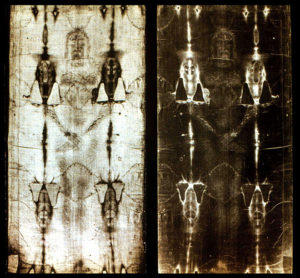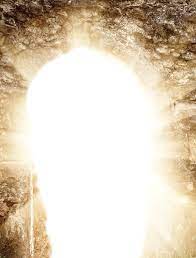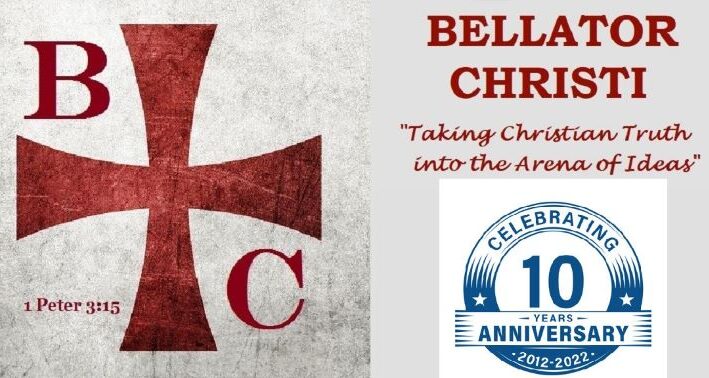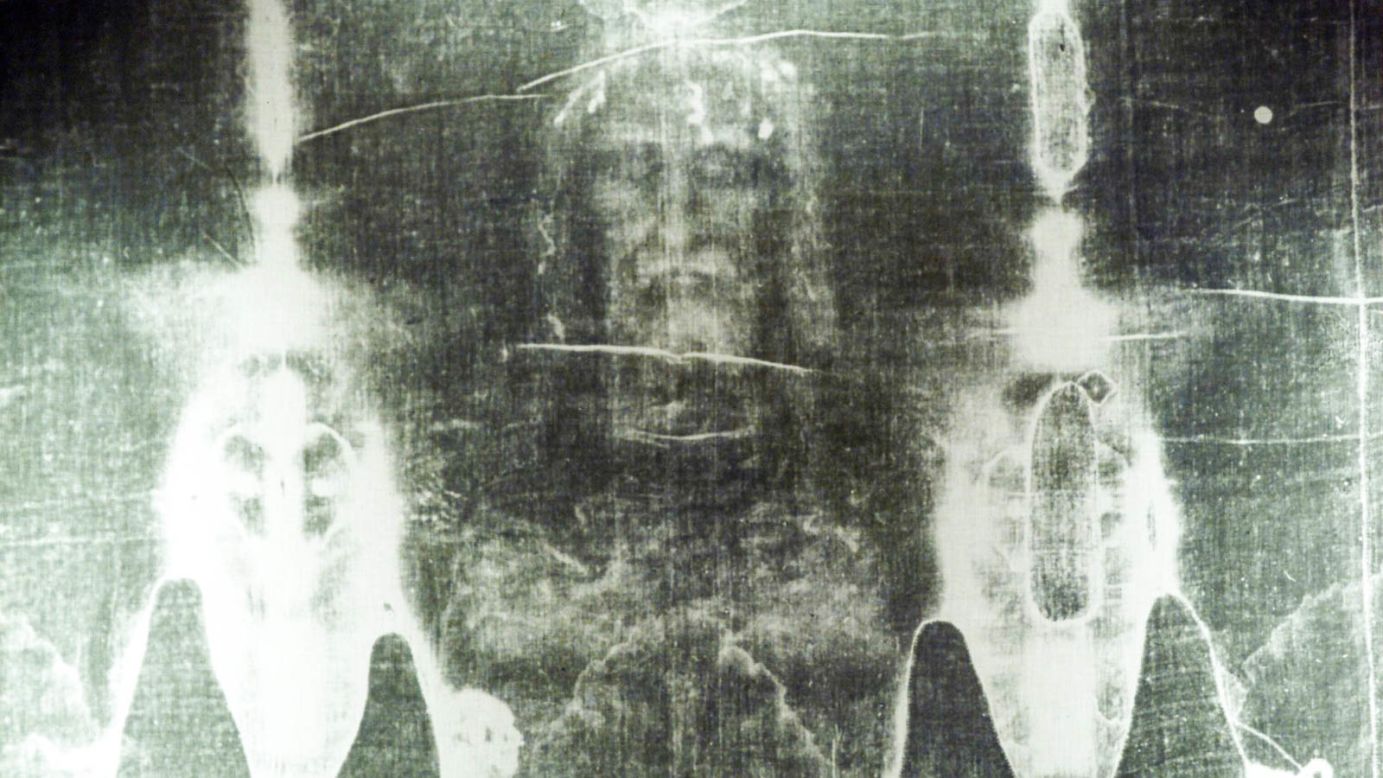New Evidence for the Authenticity of the Shroud of Turin
By: Brian G. Chilton, M.Div., Ph.D. | March 31, 2024

The Shroud of Turin is a puzzling archaeological find of antiquity that has stupefied, amazed, and awed scientists and scholars worldwide. The Shroud is a 14-foot-5-inch x 3-foot, 7-inch herringbone linen cloth that bears a faint front and back image of a crucified man. The details of the crucifixion match the unique depiction of the crucifixion of Jesus of Nazareth, leading many to believe that the image on the cloth is that of Jesus himself.
The image on the linen cloth is not a painting and bears authentic blood stains on the head, hands, feet, arms, legs, chest, and back. A large blood stain is found under the left pectoral muscle, between the bones of the ribs. The flow of blood appears to be the result of a puncture wound through the chest and heart.
Debunking the Carbon-14 Dating
In the late 1980s, a piece of the shroud was cut off to undergo a carbon-14 test. The test showed that the linen cloth dates to the medieval period. However, later studies indicated that the piece taken from the cloth was part of a repair work project undertaken by a group of nuns after the shroud caught on fire. Thus, the test did not authenticate the date of the cloth.
First-Century Plant Particles
Other studies that seemed to prove the authenticity of the cloth included the extraction of plant particles that not only dated to the first-century but also belonged to plants that blossomed in the Jerusalem area from late March to early April. Additional tests opened the possibility that the cloth belonged to the first-century period. Added to the interest of the Shroud is the historical trail that goes back to the early years of the church. Some have claimed that the disciple Thomas could have taken the Shroud to the King of Edessa in the mid-first century.
Yet even more recent studies have added even more reasons to accept the possibility that the Shroud could very well be the burial cloth of Jesus Christ. This article will look at a few of the more intriguing findings that have come over the last few years.
New Details Showing that the Shroud Originated in the Middle East
According to the Catholic Herald, new scientific studies revealed that the flax used to make the linen on the Shroud was grown and developed in the Middle East.[1] Studies show that the flax originated in the western Levant—an area shared by Israel, Lebanon, and the western parts of Jordan and Syria.[2] The new study shows that the Shroud was at one time in the Middle East and was not a European creation.
The study also found that the coins placed on the eyes of the crucified man matched a similar practice documented by a second-century burial source in Judea. Adding to the study, the wounds from the crown of thorns are in a helmet style that matches a featured characteristic of punishment in Asia Minor and the Levant rather than in Rome and Europe. The Shroud holds all the earmarks of a Middle Eastern artifact rather than one from medieval Europe as some have suggested.
X-Ray Scan Dates the Shroud to the First-Century
The carbon-14 dating has now been largely discredited by the majority of researchers studying the Shroud. This includes four research papers, written by 12 experts, and published in peer-reviewed academic journals, all of whom agree that the carbon-14 dating was flawed.[3] New non-destructive dating tests—which appear to be more accurate and less likely prone to contamination—have now conducted experiments on the Shroud.
The test used for the Shroud was the Wide-Angle X-Ray Scattering test. It uses wide-angled X-Ray experiments to determine the chemical composition and phase of decay of polymer samples. The test examines the polymer samples and can accurately gauge when the fibers were created. The Wide-Angle X-Ray Scattering test confirmed that the Shroud of Turin was made in the first-century and contains extremely rare soil found in Jerusalem along with deposits of pollen from plants exclusively found in the Jerusalem region.[4]
The Creation of the Image on the Shroud Is Now Partially Understood … And It’s Really Weird
The researchers that tested the Shroud with the Wide-Angle X-Ray Scattering test also discovered something very bizarre. What they found was also deduced by previous researchers from the National Agency for New Technologies and the Energy and Sustainable Economic Development agency, both from Italy.[5] What was bizarre is that the blood marks should have stuck to the body and smeared when the body was removed. Yet that did not happen with the Turin Shroud. Further studies suggest that the body dematerialized in the Shroud, causing the Shroud to collapse on itself.[6]
Similar Image with X-Ray Radiation
Engineering researchers from the National Agency for New Technologies and the Energy and Sustainable Economic Development, including Dr. Daniel Murra, Dr. Paola Di Lazzaro, and Dr. Giuseppe Baldacchini, successfully produced an image on a cloth similar to the Turin Shroud, but on a much smaller scale. Oddly, the team produced the image by X-Ray radiation with a laser.
Radiation from Within
 Murra, Di Lazarro, Baldacchini, and their team members determined that vacuum ultraviolet photons account for the thin coloration depth, the hue of color, and the presence of the image even in areas that were not in direct contact with the body.[7] In layman’s terms, a brilliant display of light emerged from within the body, leading to the body’s dematerialization, and the Shroud’s collapse upon itself.[8]
Murra, Di Lazarro, Baldacchini, and their team members determined that vacuum ultraviolet photons account for the thin coloration depth, the hue of color, and the presence of the image even in areas that were not in direct contact with the body.[7] In layman’s terms, a brilliant display of light emerged from within the body, leading to the body’s dematerialization, and the Shroud’s collapse upon itself.[8]
Just how much power are we talking about? John Jackson, a researcher at STURP, assesses that the Shroud’s image would take “several billion watts of light radiation, which exceeds the maximum output of any energy source of UV radiation known today. If that accompanying heat energy had been present, the cloth would have vaporized in less than 1/40 billionth of a second.”[9] One estimate is that it took around 4-8 billion watts of UV light radiation to produce the image on the Shroud. Some researchers suggest that the level of radiation may have been much higher. They hold that the more likely at level was at 34 trillion watts of ultraviolet light radiation.
Di Lazarro concludes, “Our research does not address the problem of when, it gives some hints on how … [Unlike chemical contact techniques], attempts using various radiations (vacuum ultraviolet photons, electrons from a corona discharge) give a coloration that looks shroud-like even at the microscopic level.”[10]

Conclusion
So, what can we take from these findings? It appears that more and more research suggests that the Turin Shroud is the authentic burial cloth of Jesus of Nazareth. The cloth is placed in the first-century (the time when Jesus lived) and in the Middle East (where Jesus lived). The image on the cloth matches the depictions of how Jesus was crucified, matching the Gospel narratives. Additionally, the image was produced in some otherworldly manner. The process involved UV light radiation, but without a heat source which would have destroyed the cloth. Accompanying this oddity, the process also included the dematerialization of the body within the cloth (all aspects matching characteristics associated with Jesus’s post-resurrection appearances).
While the believer’s faith is not dependent on the Turin Shroud’s authenticity, the Shroud—if legitimate—can give a believer insight into the working nature of the resurrection. Also, if the Turin Shroud is authentic, as the evidence suggests, it gives a believer some insight as to what to expect when we experience our own resurrection event.
As an early New Testament creed states, “For the Lord himself will descend from heaven with a shout, with the archangel’s voice, and with the trumpet of God, and the dead in Christ will rise first. Then we who are still alive, who are left, will be caught up together with them in the clouds to meet the Lord in the air, and so we will always be with the Lord. Therefore encouraged one another with these words” (1 Thess. 4:16–18, CSB). Even so, come Lord Jesus with your divine light and power.
About the Author
Brian G. Chilton, M.Div., Ph.D.

Brian G. Chilton is the founder of Bellator Christi Ministries and the co-host of the Bellator Christi Podcast. Dr. Chilton earned a Ph.D. in the Theology and Apologetics at Liberty University (with high distinction), a M.Div. in Theology from Liberty University (with high distinction); his B.S. in Religious Studies and Philosophy from Gardner-Webb University (with honors); earned a Certificate in Christian Apologetics from Biola University, and completed Unit 1 of Clinical Pastoral Education at Wake Forest University’s School of Medicine. Dr. Chilton is a member of the Evangelical Theological Society and the Evangelical Philosophical Society. In his spare time, he enjoys reading, working out in his home gym, and watching football. He has served in pastoral ministry for over 20 years, works as a clinical hospice chaplain, and is an Adjunct Professor of Apologetics at Carolina College of Biblical Studies (https://www.CCBS.edu).
https://www.amazon.com/Laymans-Manual-Christian-Apologetics-Essentials/dp/1532697104
https://www.amazon.com/Conversations-about-Heaven-Difficult-Questions/dp/1666762687
Notes
[1] Simon Caldwell, “New evidence indicates Turin Shroud not a European forgery,” Catholic Herald (March 26, 2024), https://catholicherald.co.uk/new-evidence-indicates-turin-shroud-not-a-european-forgery/, accessed March 30, 2024.
[2] Ibid.
[3] N.g., “New evidence supporting Shroud of Turin is too strong to ignore, says journalist,” Catholic Weekly (Apr. 5, 2023), https://www.catholicweekly.com.au/new-evidence-supporting-the-shroud-is-too-strong-to-ignore-says-journalist/, accessed March 30, 2024.
[4] Ibid.
[5] Sergio Prostak, “Scientists Suggest Turin Shroud Authentic,” Sci-News (Dec. 21, 2011), https://www.sci.news/physics/scientists-suggest-turin-shroud-authentic.html, accessed March 30, 2024.
[6] N.g., “New evidence supporting Shroud of Turin is too strong to ignore, says journalist,” Catholic Weekly (Apr. 5, 2023).
[7] Prostak, “Scientists Suggest Turin Shroud Authentic,” Sci-News (Dec. 21, 2011).
[8] Ibid.
[9] Magis Center, “How Did the Shroud of Turin Get Its Image? (Hint: Think Radiation),” MagisCenter.com (May 27, 2019), https://www.magiscenter.com/blog/how-did-shroud-turin-get-image, accessed March 30, 2024.
[10] Prostak, “Scientists Suggest Turin Shroud Authentic,” Sci-News (Dec. 21, 2011).
(c) 2024. Bellator Christi.
Updated 4/2/24.






Dear Brian Chilton
The words if and suggest don’t belong because it is impossible for the Shroud of Turin not to be the burial cloth of our Lord and Saviour Jesus Christ. With the science alongside the Holy Bible it is as simple as playing the card game snap. The title should be The Shroud of Turin is the Burial Cloth of Jesus Christ and then go on to explain why
God bless you
Chris
Chris,
Thank you for sharing your thoughts. Like you, I believe the evidence strongly suggests that the Shroud is the burial cloth of Jesus. However, when we deal with artifacts of history, we normally deal with probabilities as to whether the artifact is genuine. That was the intent behind the language. But having said that, I will say that I am more convinced than ever that the Shroud is the burial cloth of Jesus. I would double down and say that I am 98% certain that the Shroud is authentic.
Blessings,
Brian Chilton, Ph.D.
Brian,
I said “it is impossible for the Shroud of Turin not to be the burial cloth of our Lord and Saviour Jesus Christ.” And you reply “Like you, I believe the evidence strongly suggests that the Shroud is the burial cloth of Jesus…98% certain”. I never said the evidence strongly suggests, I said it is impossible not to be. You don’t believe like me because you have a 2% doubt and I am 100% certain so please don’t put words in my mouth. Please describe the evidence you have to justify your 2% doubt? Or maybe your 2% doubt claim is arbitrary and you have no evidence to suggest the Turin Shroud is not 100% authentic?
Either you believe God has left us scientific proof of the Crucifixion and Resurrection of Jesus Christ or you don’t. Any percentage of doubt is doubt and your 98% certain means you have doubt. Are you 100% certain that Jesus Christ was Crucified and Resurrected or is there a percentage of doubt there?
God bless you
Chris
Chris,
As with anything in life, we must approach any topic with the utmost of humility. We could claim with 100% certainty that something is true. Well and good. But both theologians and scientists alike believed that that sun revolved around the earth at one point in history. They were proven wrong.
Now with the Shroud, I maintain that it’s authentic with a high degree of probability. Yet I extend some degree of flexibility in the case that some future piece of evidence unravels the case before us. Do I think that will happen? Not likely, as I think the evidence is strongly in favor of the Shroud. However, I reserve some wiggle room in my assessment.
Blessings,
Brian